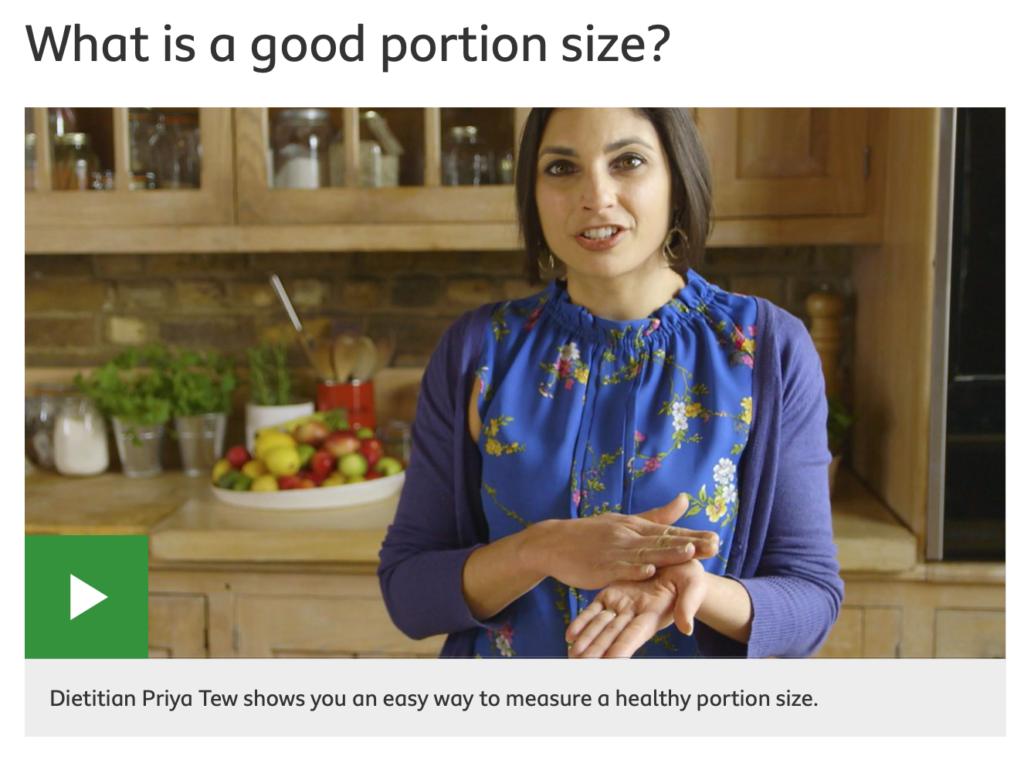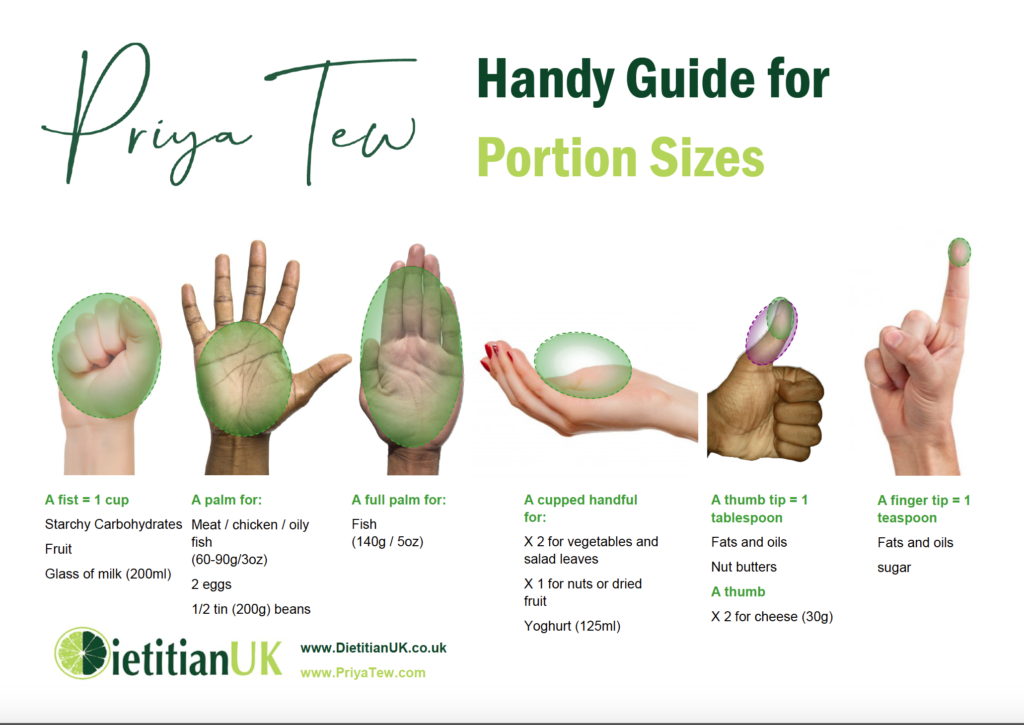What is the right portion for me? It’s a question I know a lot of you are unsure so here is a post just for you! Just a reminder that there is no 100% right or wrong, so some days you may eat more or less and that is ok. Our bodies are not robots they need differing amounts on different days. Ultimately aim for a balanced intake and try to tune into your body. Right onto the portions…
Pre-Packaged food – beware! It may look like a single serving but reading the ‘small print’ can show it actually serves 2 or more. Which is tricky as then what do you do with the leftover portion?
Food packaging for pasta, rice and grains often gives serving size by grams but not every kitchen has weighing scales, and it’s not something that’s easy to eyeball. Weighing foods out regularly can be a trigger for disordered eating too, so instead use the hand guide below or weigh out a range of carbohdyrate foods and make your own measuring mug. Place the foods one at a time into the mug and mark where they come to. Next time you won’t need to weigh out those foods, just scoop or pour into your mug.
Here is a reminder of the food groups and how many portions a day to have:
- Fruits and Vegetables = 5+ (have a variety over different days)
- These provide vitamins, minerals, fibre and a whole host of other beneficial things such as antioxidants, which all help to protect against heart conditions and some cancers.
- Starchy Carbohydrates = 3-4
- Bread, pasta, rice, potatoes, naan, chapatti, pulses, couscous, quinoa, cereals and grains.
- These provide energy, choose wholegrain where possible to boost your fibre intake.
- Meat and non-dairy alternatives = 2-3
- Meat, chicken, eggs, fish, beans, pulses, tofu, quorn, nuts and seeds.
- These foods provide protein for building and replacing muscle. Trim the fat, or choose lean options or have meat-free days with beans or pulses instead.
- We should all eat more fish in the UK, not just on Fish Fridays! Aim for 2 portions a week, one of which should be oily (eg sardines, salmon, mackerel).
- Dairy and alternatives = 2-3
- Milk, cheese, yoghurt, and plant-based alternatives eg soya, oat, coconut, rice, almond, etc. Read the label and check it’s been fortified with calcium (and even better if fortified with iodine!)
- These foods provide calcium, as well as other minerals like phosphate for keeping your bones and teeth strong. Choose lower-fat and lower-sugar options where possible.
- Unsaturated oils and spreads = ‘small amounts’ but very much needed for health
- Vegetable oil, rapeseed, olive, sunflower, are all good for the heart
- Foods high in fat or sugar as an occasional part of your diet, this will vary depending on your individual needs.
There is a helpful video of Priya demonstarting portion sizes on the BBC Food Website:

And here’s a visual infographics you can save (or print and pin up inside one of your kitchen cupboards) for next time you’re stood by the stove and about to pour in a kilo bag of penne for dinner for two!

If you wanted to use scales and weigh out your food to make a measuring mug, then the following table adjusted from the BDA may be helpful for you:
| Carbohydrates | Amount |
| Bread – 2 medium slice | |
| Pasta or Rice (boiled) 2-3 tablespoons Pasta or Rice (uncooked) | 180g 75g |
| Chapatti – 1 small | 30g |
| 2 egg sized new potatoes (boiled) | 100g |
| 1 medium baked potato (with skin)* | 180g |
| 10 oven chips | 100g |
| Breakfast cereal: 3 tablespoons | 40g |
| Porridge oats: 3 tablespoons | 40g |
| 3 rice cakes or crackers | |
| Dairy | |
| Milk or calcium fortified alternatives | 200ml |
| Yoghurt | 125g |
| Cheese | 30g |
| Protein | |
| Cooked meat (beef/pork/ lamb/mince/chicken/turkey) | 60-90g |
| Cooked fish | 140g |
| 2 eggs | |
| Beans or Pulses– 4 tablespoons | 150g |
| Meat alternative eg Soya | 100g |
| Nuts / Nut butter – 1 tablespoon/ handful | 30g |
| Fruits and Vegetables | |
| 1 – Apple/pear/orange/small banana – | 80g |
| 2 – plums/ nectarines/ satsumas/ kiwi | 80g |
| 3 tablespoons – peas/carrots/sweetcorn/mixed vegetables | 80g |
| 1 small handful – dried fruit eg raisins /apricots | 30g |
| Fruit juice or smoothie | 150mls |
| Oils and Spreads | |
| Butter or spread – 1 teaspoon | 5g |
| Oil – 1 teaspoon | 3g |
Sources:
Pingback: What is the right portion size for you? – Nourish: Mind and Body